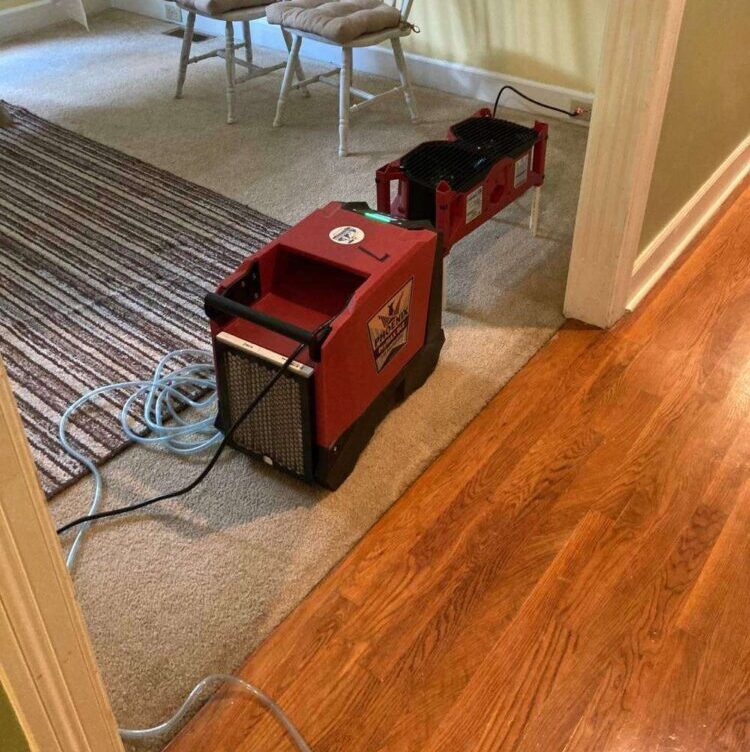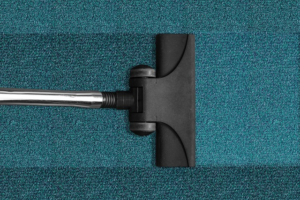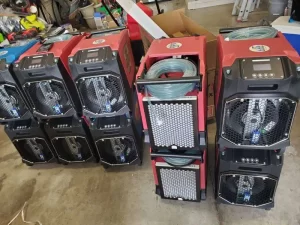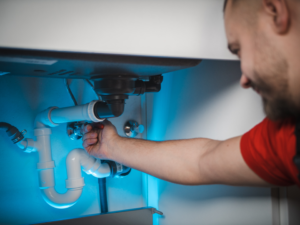If you’re dealing with a home flood, you may wonder how a dehumidifier can help in water damage restoration.
Dehumidifiers, also known as air movers or purifiers, can help control humidity levels after water damage, speeding up dry time and diminishing mold and bacteria spread.
Learn everything you need to know about dehumidifiers, how they work, the type you may need, and when to rely on the professionals to remediate your flooded home.
Do I Need To Hire Water Restoration Services to Begin the Drying Process?
A dehumidifier is an excellent first step in the drying process following water damage. However, it’s not usually enough to sufficiently dry the area and avoid mold growth. You typically have less than 48 hours to remove all water and moisture from the area to prevent further damage.
Not only do water damage restoration professionals have professional equipment that speeds up the drying time, but they also have the expertise to help salvage more of your personal belongings.
Professional water restoration services have access to the best equipment, including heavy duty vacuums, professional fans and dehumidifiers, air scrubbers, moisture detectors, and cleaning materials. You may also need a pump to remove all water on the floors.
Of course, professionals also have access to larger tools that offer more moisture removal at a faster rate. Moisture can also lead to mold, which carries its own health risks. Your restoration company has the best tools to help detect and remove mold.
How The Work: Why Dehumidifiers Can Help With Water Damage
A dehumidifier collects air in a room and pulls it through to cool and remove moisture, using cooled coils to collect moisture and dispose of it through a reservoir.
A dehumidifier is different than a traditional fan. Instead of circulating airflow, a dehumidifier removes moisture without recirculating it back into the room. Dehumidifiers typically work to reduce the home’s humidity level to at least 40-50%. Any humidity level over 50% can lead to mold growth.
Many people use a dehumidifier in addition to other drying techniques. For example, you may also run fans in the same space.
Can a Dehumidifier Remove Mold?
While dehumidifiers can help dry out an area, they don’t remove mold. It’s best to contact a professional mold removal company to avoid spreading mold spores throughout your home. You also shouldn’t use a dehumidifier until the water leak is repaired and all excess standing water is removed.
Tips to Choose the Right Dehumidifier After a Home Flood
For the best results, you’ll want to choose a dehumidifier that is designed for your needs. Here are a few tips to help you choose the right one:
Consider Size
One of the most essential steps to using a dehumidifier is choosing the right size. While you can get away with a smaller dehumidifier in smaller rooms, like the bathroom or a closet, you’ll need a larger one for bigger rooms. Choose the appropriate dehumidifier size based on the square footage of the room in which you need to use it.
Sometimes, you may even need a specific dehumidifier for the drying process. For example, some equipment is designed for use in rooms with less humidity.
Select the Right Capacity
Choosing the right dehumidifier also means considering capacity. Dehumidifiers are categorized based on the level of moisture in an area. Choose a dehumidifier that efficiently removes the level of moisture you have.
Working with water damage restoration professionals connects you to the tools to measure condensation levels and choose the right equipment. A portable dehumidifier can be a great option to keep on hand when navigating water damage.
Review Features
Dehumidifiers also come in various features, and choosing the one that best meets your needs is essential. Of course, you’ll want to choose a dehumidifier with the right volume and tank size needs. Some machines also come with filters too. A filter can clean the air as it moves through the machine. Some dehumidifiers also come with an auto-restart function that prevents power interruption.
Can I Use a Dehumidifier To Dry Out the Walls After Flooding?
While a dehumidifier does an excellent job at removing water from a room, it’s typically not enough to dry walls. A dehumidifier is also not usually enough to remove all water and evaporation from certain materials, like cement.
Extensive floods typically require the professional expertise and services of a remediation company.
How Long Does It Take for Commercial Dehumidifiers To Dry Out a Room?
How long it takes for a dehumidifier to dry out an area after a flood depends on the moisture level, humidity levels, and overall extent of water damage. At a minimum, a dehumidifier takes at least 48 hours to dry out a room.
It’s best to leave the dehumidifier and fans going for a minimum of 24 hours. This timeline, however, may vary depending on the extent of water damage and the humidity level in the area. Turning off the dehumidifier too early can lead to higher humidity levels and even water getting trapped behind the walls.
In some cases, the water removal and remediation process can take weeks. The dehumidifier should be left on and working until all the water is removed.
How To Prevent Mold Growth After a Flood
Mold prevention is an important part of cleaning up after a flood. It takes just 24 hours for mold to grow.
The best ways to prevent mold growth include quickly removing all water stains, excess water, and condensation from the room. In addition to using a dehumidifier, you can promote sufficient air flow using an air conditioner and fans. Additionally, open all windows in the room to cross circulate, further speeding up dry time.
If standing water has been sitting for more than 24 hours or you notice signs of mold, it’s usually best to contact a professional remediation company. Mold growth can quickly get out of control and affect the air quality in your home.
Prompt remediation is essential when you have water damage that could promote mold growth. Mold can quickly develop and spread to nearby walls. Once mold is present after a flood, you’ll have to remove not only the surface but also all affected materials.
Contact a Professional Water Damage Restoration Company Today
A dehumidifier is one of the best ways to manage humidity after a flood. Whether an appliance leak or damaged roof allowed standing water to enter your home, you’ll need to take extra care to repair and remediate such damages.
Contact Flood Kings today to remediate and restore your Tennessee property. We offer expert water removal and mold remediation services.








